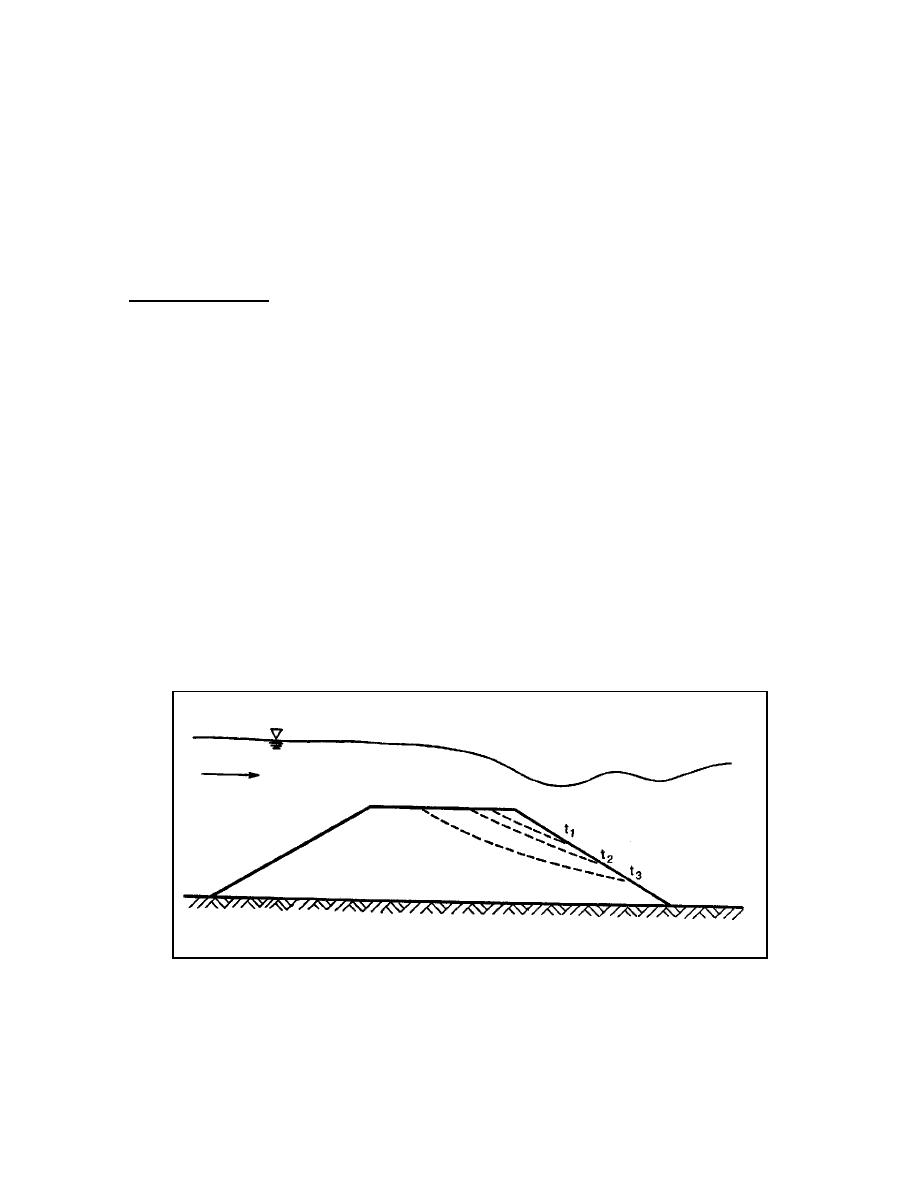
In practice, it is recommended that a range of Manning's n values of approximately +/- 10
percent of the base value be used to calculate the range of anticipated flow conditions. The
minimum value of Manning's n is used to determine the peak anticipated velocity, and the
maximum value of Manning's n is used to determine peak anticipated flow depth and shear
stress.
6.8.3 Mechanics of Overflow Erosion
Erosion Processes. When flow overtops an embankment, locally high velocities and shear
stresses will create strong erosion forces, typically at the downstream shoulder and on the
embankment slope, that are too great for the soil of the embankment to withstand. There
are two primary processes of erosion that occur during an overtopping event.
When the overtopping flow is submerged, erosion typically begins at the downstream
shoulder. This is the condition often experienced by roadways and approach embankments.
Figure 6.28 (Chen and Anderson 1987) shows the progression of this type of failure at times
t1, t2, and t3. As flow accelerates over the embankment, a surging hydraulic jump is formed
which causes a nick point between the shoulder and downstream slope. This nick point will
begin to migrate upstream due to the high velocities and erosion will begin to move
downstream. The downstream migration of the erosion is caused by the turbulence
associated with the hydraulic jump. It should be noted that, depending on the tailwater
conditions and embankment geometry and soil type, even events of long duration may not
ultimately result in a full breach of the embankment section. This is because a balance of
forces can develop once the initial embankment erosion has produced a geometry that
achieves equilibrium between hydraulic forces and the erosion resistance of the remaining
embankment material.
Figure 6.28. Typical embankment erosion pattern with submerged flow
(Chen and Anderson 1987).
6.48




 Previous Page
Previous Page
